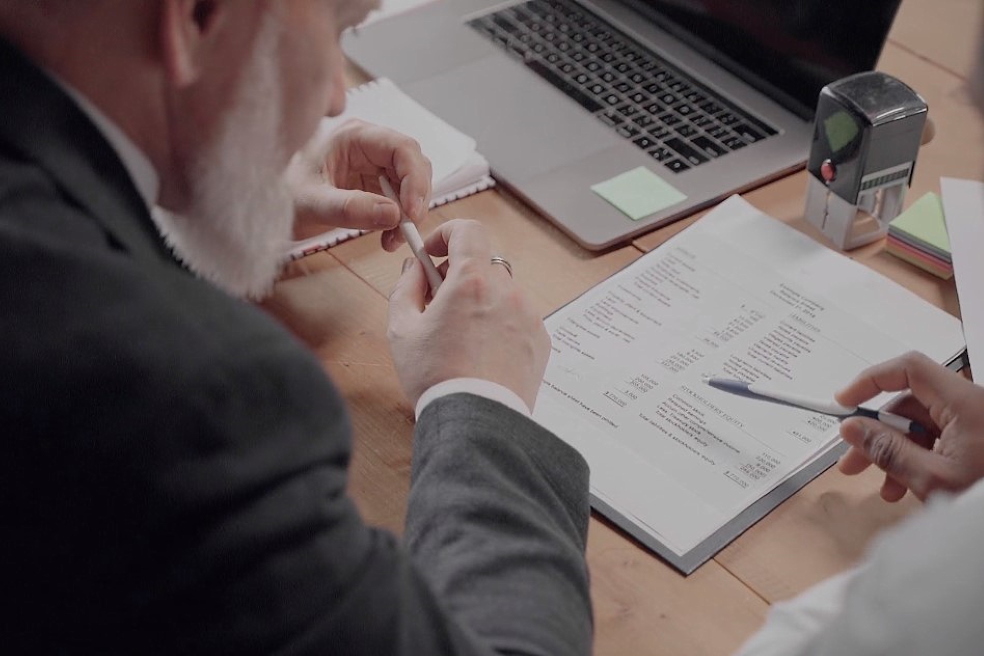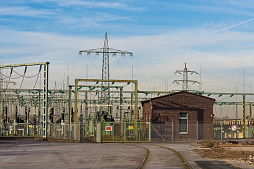After receiving the necessary documents and project presentation, our team will try to review your request as soon as possible, and leading experts will offer the best options for project funding.
According to the Energy Outlook 2021, the combined market for wind and solar PV technology in Europe could grow by 35 GW during 2021, requiring an investment of 60 billion euros.
The International Energy Agency says wind power will grow by 8% and solar power by 13%.
Once completed, the solar power plant becomes the cheapest technology to operate for power generation, since solar radiation is available completely free of charge, and modern equipment requires minimal operating costs.
Thus, renewable energy sources easily displace fossil fuels as soon as they enter the market.
This gap will widen even further in 2021. Positive market trends plus preferential terms persisting in many countries will drive the sector's growth. This is complemented by technological advances that have made newly built solar power plants cheaper on average than coal or nuclear power plants.
An important point in the context of increasing the competitiveness of solar energy is the correct choice of a financial model for a solar power plant project.
Among the potential instruments for the implementation of these capital-intensive projects, long-term investment loans and complex project finance instruments are now available to businesses.
GCAM Investment Group offers the implementation of investment projects in the field of renewable energy around the world.
Our specialists are ready to provide customized solutions for each project, from long-term financing to the development of technical documentation and the construction of a solar power plant under an EPC contract.
Contact us.
Long-term bank loans for the construction of solar power plants
A bank loan is one of the oldest and most popular business financing instruments that remains in high demand in solar energy.A significant percentage of the $ 2.7 trillion invested in renewable energy sources in the world over the previous decade came from long-term loans.
In general, there is no fundamental difference between short-term and long-term loans. Some of the features of the latter are listed below:
• Long-term loans for the construction of solar power plants are usually provided for a period of 5-7 years or more, depending on the type of project.
• The interest rate can be fixed or variable, the latter being common. Recently, loans with a more complex variable interest rate are often offered.
The volatility of interest rates makes it necessary to propose new financial transactions adapted to changing market conditions.
In this sense, the variable interest rate makes the financial model of the solar power plant project more flexible, adapting it to the general conditions of the financial environment. For this reason, banking operations that were previously subject to fixed interest rates are gradually being replaced by indexed loans (linked to the index), the parameters of which vary depending on market fluctuations.
Any lending operation involves the assumption of a certain risk by the lender.
As the maturity period increases, the uncertainty increases, so the requirement for guarantees that protect the lender becomes more common.
A loan for the implementation of a solar project can be protected by real guarantees in the form of securities, real estate, movable property and other valuable assets. If there is not enough collateral, the financial institution may request one or more guarantors to provide debt repayment in the event of a default on the borrower's company.
Considering that the construction of a large solar power plant with an installed capacity of 100 MW may require about $ 80-100 million or more, some projects are financed by bank syndicates, rather than individual banks.
Syndicated loans are provided for the implementation of large projects through one credit operation.

This type of lending helps energy companies reconcile the demand for large volumes of financing with their desire to avoid excessive concentration of risk from financial institutions.
Benefits of investment loans for solar energy projects
Investment bank loans have become extremely popular in solar energy, and the ease of obtaining funds is far from the only reason for the demand for this versatile financial instrument.Table: Advantages of a bank loan for the construction of a solar power plant.
| Advantages | Short description |
| Wide range of financial products | Bank loans are available in a wide range, which allows companies to tailor the financial product to the needs of a specific business project. |
| Receiving significant funds for business | In most countries of the world, banks are now showing increased interest in solar projects, which greatly simplifies access to investment loans. Such funding can be obtained more quickly than other sources. |
| Availability of financing for complex projects | Alternative sources of funds may be more beneficial in terms of cost of borrowed funds or taxation (for example, a lease agreement), however, not all power plants can be financed through them. In such cases, a bank loan may be the only solution to finance a complex project. |
| Expert opinion of banking specialists | By applying for a bank loan, a company automatically receives an independent opinion from the bank on a future energy project. At this stage, there is still a chance to correct some of the shortcomings. |
| Professional advice and support | The bank offers businesses to use the services of professional financial consultants to solve current problems and to find alternative sources of financing that best suit their needs. |
Long-term bank loans, although used most often for solar projects, cannot be seen as ideal financing.
When determining the financial model for a solar power plant project, a company should consider the advantages and disadvantages of each of them in a specific business situation.
Disadvantages of using bank loans
There are no ideal financial instruments.Every company has a unique economic and financial situation, so not every solution for one company will work for another.
Business owners or those responsible for managing corporate finance should not forget about other alternative financing options that are emerging in the market and can often be more attractive than the popular investment loan.
Table: Disadvantages of a bank loan for the construction of a solar power plant.
| Disadvantages | Short description |
| Strict requirements for borrowers | A bank loan is practically inaccessible for a young company. Lack of creditworthiness means a small chance of getting funds from the bank. Chances arise when the company provides the appropriate financial collateral or a guarantee. |
| Long verification procedure of the company and solar project | Another disadvantage of lending is the time-consuming process of considering a loan application. The numerous formalities and gathering of the documentation can also be difficult for small companies. |
| The requirement to ensure and guarantee | A bank loan imposes certain restrictions on the assets of the borrowing company and interferes with carrying out some operations necessary for the development of the business. In addition, not all companies are ready to provide adequate material support or guarantee of partners. |
| Constant debt burden on business | Unlike off-balance sheet financing, bank loans worsen the financial performance of a business and burden reporting throughout the entire debt repayment period. |
| Risk of worsening loan repayment terms | Conditions may deteriorate during the term of the loan agreement as a result of the introduction of new legislation, changes in the inflation rate, and an increase in the cost of debt service. |
Borrowers should understand current financial market offerings and carefully analyze individual offers.
The financial team of GCAM Investment Group is ready to provide you and your employees with comprehensive advice on the implementation of investment projects.
Project finance for solar power plants
The project finance (PF) method is one of the most advanced methods of raising funds for the construction of large solar power plants or other capital-intensive energy facilities.The PF allows a business to attract significantly larger funds in comparison with traditional bank lending.

Large enterprises making long-term investments today are forced to attract capital from outside, since they rarely have significant amounts of their own funds. Various financial instruments come to the rescue, which include loans, leasing and project finance.
Energy companies that run several expensive projects at the same time or are faced with debts for previously consumed energy need capital for further development and implementation of large projects. PF opens up new opportunities for business expansion, relying on the prospects of a specific project, and not on the assets of the borrowing company.
Along with the growing popularity of project finance and the development of more and more efficient variants of this method, it is becoming suitable for smaller and smaller projects.
Some features of project finance
In the world financial literature, you can find different definitions of the term "project finance".Researchers continue to debate whether project finance is a method, formula, concept, or form of financing. In any case, PF has been known since ancient times, when the merchants of Ancient Greece financed trade expeditions, lending money against future profits.
The proponents of a project usually create a new company to implement it and, unlike a conventional loan, have limited liability for obligations.
Organization of project finance requires the establishment of a Special Purpose Vehicle (SPV), which manages the solar project and raises funds.
This is a legally independent company that is not associated with the assets of the initiator of the project. Consequently, the latter's liability is limited to participation in the SPV. This company acts as a borrower and raises funds for the construction of a solar power plant.
After the completion of construction and commissioning of the facility, the debt is repaid using the proceeds from the electricity sold.
The owners and holders of shares in such companies are, first of all, companies involved in the implementation of a specific project (contractors or subcontractors).
It could also be potential end users of the power plant who need an energy source.
Project finance participants enter into a complex system of agreements, which are aimed at rational distribution of risk, helping to manage the project more efficiently. In any unfavorable situation, the parties seek to mitigate the consequences and do their best to remedy the situation. This is the main advantage of this method, since the PF ensures risk diversification among all project participants.
Benefits of project finance for solar energy sector
PF can be characterized as a method of financing investment projects, separated from the initiators of the project, in which the main source of debt repayment is the cash flow generated by the project, and the debt is secured by the assets of the project, but not by the initiator company.The basis for the success of project finance for solar power plants is the reliability of financial institutions and an adequate assessment of the profitability of an investment project and its future cash flows.
The obvious benefits of project finance include the following:
• Relief of the public sector from high capital expenditures.
• Attraction of significant borrowed funds that cannot be obtained using traditional financial mechanisms, such as a bank loan.
• Off-balance sheet nature of financing, which contributes to maintaining a high creditworthiness of the initiator of the solar project.
• Rational distribution and effective control of project risks as a result of their diversification.
• Ability to involve government agencies, national and international institutions in order to monitor the implementation of projects.
If we talk about the disadvantages of PF, it is worth mentioning the high cost of raising funds.
The project finance method came to renewable energy in the 1990s, but initially PF instruments were used in the oil and gas sector and infrastructure. As before, this source of project financing is applicable to capital-intensive projects, since the organization of the PF scheme requires significant costs and, accordingly, may be ineffective for small projects.
Potential investors should consider possible hidden costs. In particular, there may be additional costs associated with loans and financial derivatives.
Often there are costs associated with a complex procedure, including diversification of risks and distribution of responsibilities of the parties involved in the project. The last danger associated with the implementation of a solar project using project finance is the risk of conflicts between individual participants involved in the project.
Barriers to using project finance in solar energy:
• Technical barriers. Power generation is difficult to accurately predict due to changing environmental conditions and fluctuations in solar radiation. It is also important to consider that technological progress brings more and more new technologies that can compete with the current project.
• Economic barriers. The danger lies in a decrease in demand and a drop in the cost of generated energy after the guaranteed period. Abrupt changes in the structure of the economy can change the market environment. The lack of capital in some markets also creates certain problems for attracting financing for solar projects.
• Political barriers. Political risks are relevant not only for developing countries with their unstable legislation and high levels of corruption. Today, some countries are abandoning incentives for solar energy, leaving existing projects alone with market reality.
To summarize the above, project finance is a very good choice for the construction of multi-megawatt solar power plants and other large facilities.
The PF ensures the attraction of adequate resources and diversification of risks.
Choosing a financial model for a solar energy project
Companies that succeed in the auction often have limited time to expand their PV capacity.What is the best financial model for a solar power plant project today?

There are two main ways.
The first business model is to finance the construction of a solar power plant through a long-term bank loan. In many countries, such a loan is not difficult to obtain by holding a successful auction and submitting a serious business plan.
The second business model involves the organization of project finance (PF) with the involvement of an investor who, at a price determined depending on the capacity of a given facility, finances its construction and acquires ownership of this asset. Sometimes the company, in addition to cash injections associated with the completion of the solar power plant, receives a long-term contract for its maintenance.
The transaction is usually carried out as the purchase of shares in a limited liability company whose assets are a photovoltaic installation.
Typically, a long-term contract for the operation and maintenance of the facility is signed between the same parties.
The company that is the subject of the transaction receives a guaranteed sales price for the energy produced for 10-20 years and guarantees the estimated costs necessary to keep the installation at the highest level of efficiency.
This situation allows investors not only to gain know-how related to the engineering design and construction of power plants, but also to secure a long-term source of income. Equally important in this case is the availability of free funds that can be spent on the development of new projects.
How much does a 1 MW solar power plant cost?
The cost of building a solar power plant remains a secret, which is revealed to the initiator only as a result of detailed design calculations and negotiations with potential contractors and equipment suppliers.
The cost of each megawatt of installed capacity can be named only approximately, focusing on the specifics of the project and the market of the host country.
So how much does a 1 MW PV plant cost to an investor?
Estimated world figures today range from 750 thousand dollars to 1 million 350 thousand.This is determined by the technology chosen, the size of the facility (economies of scale), labor costs, distance from infrastructure, etc.
We must not forget also the main operating costs that the investor will face:
• Costs of ongoing maintenance performed by the O&M contractor.
• Expenses for renting the land on which the solar power plant is located.
• Property tax: the tax will be levied differently depending on the host country, and experienced consultants can manage this risk and ensure that taxes are minimized.
• The cost of periodically replacing inverters and other items.
• Insurance and financial service costs.
If you would like to know more about solar power plant construction costs and operating costs, contact the GCAM Investment Group finance team.
What should an investor consider when planning a solar project?
The use of advanced financial models for the construction of solar power plants (for example, project finance) has transformed renewable energy in the last few decades, making it an affordable business with a low threshold for entry.Solar energy is becoming an increasingly promising field of investment for investors these days as the market matures and grows across the world.
Unfortunately, the photovoltaic industry is a complex business and the greatest risk comes from the investment time horizon. The investment period is at least 10-15 years from the date of the first sale of energy. During this period, the cash flow for electricity sold is usually guaranteed at the level offered at the auction and indexed for inflation.
After this period, it is necessary to forecast the price for the entire remaining life of the installation.

The world's leading equipment manufacturers guarantee that the performance degradation of solar panels will not exceed 20% within 25 years of operation. If the cost base is low enough, that is, provides a positive cash flow after the guaranteed tariff period, the investment time horizon can be up to 30 years (depending on equipment and quality of service).
The truth is that it is almost impossible for project proponents to predict prices for renewable energy in 10-15 years, that is, beyond the typical guaranteed period.
What should a business be guided by when making an investment decision?
At this stage, it is important to understand that investments in a solar project must necessarily pay off in a much shorter time than provided by the terms of the contract for the supply of electricity. The future is uncertain, so you cannot rely on it.
Investors looking to make the right investment for large funds should receive the expected return during the guaranteed price period.
Otherwise, it becomes a gamble worth tens or hundreds of millions of dollars.
However, the price of electricity is not the only factor influencing the revenues of a solar project. Much depends on the amount of electricity produced and sold to consumers throughout the year. It depends on the amount of sunlight in the area, the quality of the installed equipment, periodic inverter replacement and professional maintenance.
The listed aspects can only be calculated by an experienced specialist.
Moreover, to a large extent it is possible to assess it only after the completion of the installation work. The final contract must be signed only after the completion of all construction and installation works and the technological start-up of the entire installation with confirmation of the expected level of electricity production.
The return on investment in a solar power plant depends on the following factors:
• The cost of building or purchasing an object.
• Time frame of the investment project (period of return of funds).
• Expected prices for generated electricity in the coming years.
• The amount of electricity sold during the specified period.
• The amount of operating expenses for the year.
• Choice of source of funds.
When developing a financial model of a solar power plant, it is important to take into account the complexity of the construction of such facilities, which in some cases are associated with a certain risk and unpredictability.
This is not only about the construction and installation time of equipment, which can vary from 3-6 months to 1 year or more, taking into account the scale and technical difficulties that may arise at the site.
The project depends on successful planning, engineering design of a solar farm, finding and preparing a suitable site for construction, obtaining licenses, supplying electrical components and metal structures, installation, etc.
If you are planning to build a large solar power plant, contact our consultants.
Our financial and technical team will help you get the expected construction cost estimate, select engineering solutions and determine the optimal financial model for a specific project.






















